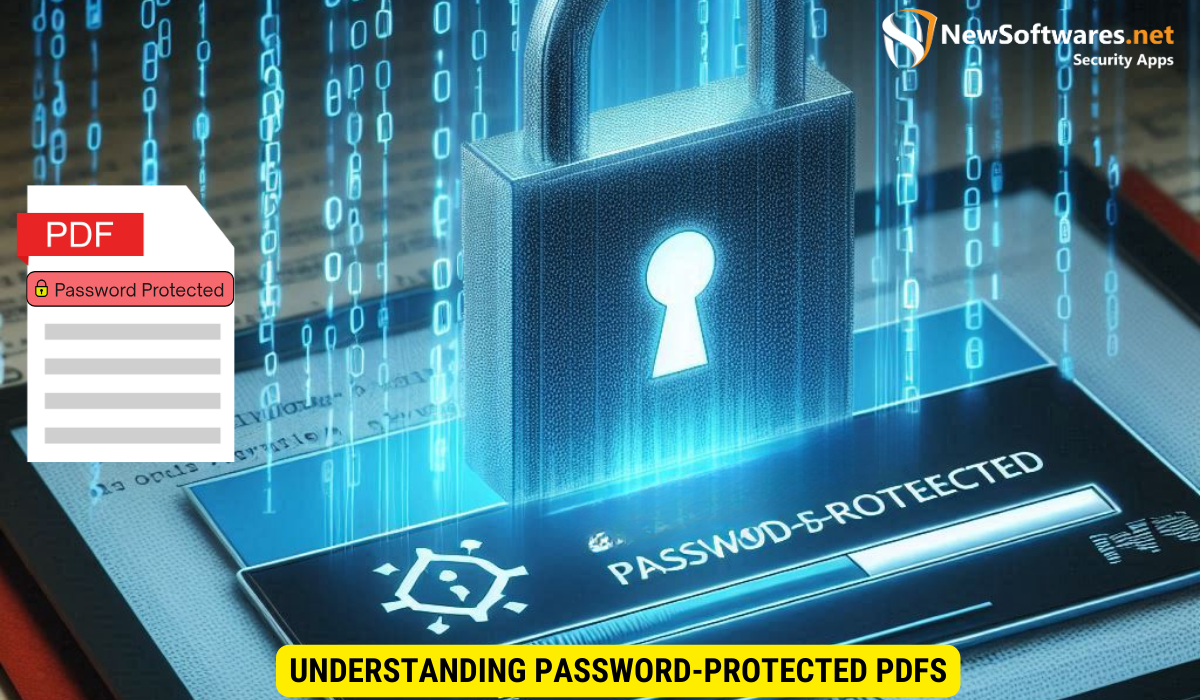To upload a password-protected PDF, follow these steps:
- Create a Password-Protected PDF: Use Adobe Acrobat or an online service to set a password for your PDF file.
- Access the Upload Service: Go to the website or cloud service where you want to upload the PDF.
- Select the PDF File: Upload the password-protected PDF from your device.
- Complete the Upload: Follow the prompts to finish the upload process. The PDF will retain its password protection after being uploaded.
In today’s digital age, security is of utmost importance, especially when it comes to sensitive documents. Password protection is a vital feature that ensures only authorized individuals can access and view confidential information. If you’re unsure how to upload a password-protected PDF, worry no more. I will guide you through the process step by step, addressing common issues and sharing best practices along the way.
Understanding Password-Protected PDFs

Before delving into the uploading process, it’s crucial to understand the importance of password protection for PDFs. PDFs, or Portable Document Format files, are widely used for document sharing due to their versatility and compatibility across devices and operating systems. However, they may contain sensitive information that needs to be safeguarded from unauthorized access. By password protecting a PDF, you can control who can open, print, edit, or copy its contents.
Importance of Password Protection for PDFs
With the rising concern of data breaches and privacy violations, password protection plays a crucial role in maintaining document security. By adding an extra layer of protection, password-protected PDFs ensure that only authorized individuals can access sensitive information, preventing unauthorized distribution, copying, or modification. Whether you’re sharing financial reports, legal contracts, or confidential client information, password protection is a must to maintain confidentiality and compliance.
How Password Protection Works in PDFs
Password protection in PDFs relies on encryption algorithms to secure the document. When you assign a password to a PDF, the encryption process transforms the content into an unreadable format, which can only be decrypted with the correct password. This encryption prevents unauthorized users from accessing the information stored within the PDF file. It’s important to note that password protection alone may not be foolproof, and it’s recommended to use strong, unique passwords to enhance security.
Preparing Your PDF for Upload
Before uploading a password-protected PDF, it’s crucial to ensure that the document is correctly prepared. This involves assessing the security settings of the PDF and verifying the correctness of the password input.
Checking PDF Security Settings
Firstly, check the security settings of the PDF to confirm if it’s password-protected. You can do this by right-clicking on the PDF file, selecting “Properties,” and navigating to the “Security” tab. Here, you’ll find information about the document’s security settings, including whether it requires a password to open or perform certain actions like printing or copying. If the PDF is not password-protected, you’ll need to apply the necessary security measures before proceeding with the upload.
Ensuring Correct Password Input
When dealing with password-protected documents, it’s essential to enter the correct password to avoid any issues during the upload process. Carefully input the password, ensuring you correctly differentiate between uppercase and lowercase characters and double-check for any typos. If you’re unsure about the password, try to verify it with the document’s owner or the person who initially applied the password.
Steps to Upload a Password-Protected PDF

Now that you’ve prepared your password-protected PDF, it’s time to upload it securely using the correct procedure. Following the step-by-step guide below will ensure a seamless and hassle-free upload process.
Choosing the Right Platform for Upload
The first step is to select the appropriate platform or service for uploading your password-protected PDF. Depending on your requirements, you may choose a cloud storage provider, a file-sharing platform, or an email service that supports encrypted attachments. Consider factors such as file size limits, security features, and ease of use when making your decision.
Steps to Upload Your Password-Protected PDF
- Access the chosen platform or service and log in to your account.
- Locate the upload button or option, typically denoted by a “Upload” or “Add files” label.
- Click on the upload button to open the file selection dialog box.
- Navigate to the directory where your password-protected PDF is saved.
- Select the PDF file by clicking on it once, then click “Open.” The file will begin uploading.
- Depending on the file size and internet connection speed, the upload process may take some time. Wait patiently until it completes.
- Once the upload finishes, you’ll receive a confirmation message. The password-protected PDF is now uploaded and ready for secure sharing.
Troubleshooting Common Issues
While uploading password-protected PDFs is usually straightforward, you might encounter some common issues along the way. Knowing how to troubleshoot these issues can save you time and frustration.
Dealing with Incorrect Password Errors
If you’re repeatedly receiving incorrect password errors while attempting to upload a password-protected PDF, double-check the password you entered. Ensure all characters are correct, paying attention to uppercase and lowercase letters. If you’re certain the password is accurate, try opening the PDF locally on your device using a PDF reader to confirm it’s accessible. If the local opening fails, you might need to consult the document’s owner or apply password recovery techniques.
Resolving Upload Failures
Upload failures can occur due to various reasons, such as connection issues or file size limitations. If your password-protected PDF fails to upload, check your internet connection stability and try again. If the issue persists, ensure the platform or service you’re using supports the file size of your PDF. In case you encounter ongoing upload failures, consider compressing the PDF file or reaching out to technical support for assistance.
Best Practices for Managing Password-Protected PDFs
Protecting your sensitive information goes beyond simply uploading password-protected PDFs. By following these best practices, you can enhance document security and minimize potential risks.
Keeping Your PDFs Secure
Ensure your password-protected PDFs are stored in secure locations, such as encrypted drives or password-protected folders. Regularly update your passwords and avoid using easily guessable information. Additionally, it’s advisable to periodically review and update the security settings of your PDFs to align with changing requirements and compliance standards.
Updating and Changing Passwords Regularly
To maintain strong security, update and change passwords for password-protected PDFs periodically. Rotate passwords at regular intervals, and avoid reusing passwords across multiple documents or platforms. By adopting this practice, you reduce the risk of unauthorized access through outdated or compromised passwords.
Key Takeaways
- Password protection for PDFs is essential to maintain document security and prevent unauthorized access or distribution of sensitive information.
- Checking security settings and ensuring correct password input are crucial steps in preparing a password-protected PDF for upload.
- Selecting a suitable platform, following the correct steps, and troubleshooting common issues are key factors for successful upload of password-protected PDFs.
- Regularly update and change passwords to keep your password-protected PDFs secure.
- Follow best practices for managing password-protected PDFs, including storing them in secure locations and periodically reviewing security settings.
FAQs
1. Is it safe to upload password-protected PDFs to online platforms?
Yes, uploading password-protected PDFs to online platforms is generally safe. The password protection ensures that only authorized individuals can access the document’s contents. However, it’s essential to choose reputable platforms that prioritize data security and employ encryption techniques to safeguard your uploaded files.
2. Can I share a password-protected PDF without disclosing the password?
Yes, you can securely share a password-protected PDF without disclosing the password. Instead of providing the password directly, you can communicate it separately via a secure communication channel, such as a private message or encrypted email. This way, you maintain control over who can open the PDF while minimizing the risk of unauthorized access.
3. Can password-protected PDFs be cracked or bypassed?
Password-protected PDFs are designed to be secure and resistant to unauthorized access. However, it’s important to choose strong, unique passwords and follow best practices for password security to minimize the risk of password cracking or bypassing techniques. Keep in mind that passwords are just one layer of defense, and additional security measures, such as encryption and access control, should be considered for highly sensitive information.
4. Are there alternatives to password protection for securing PDFs?
Yes, besides password protection, there are alternative methods to secure PDFs. Encryption is a powerful technique that renders the content of a PDF unreadable without the decryption key. Digital signatures can also provide document integrity, ensuring the PDF hasn’t been tampered with. Additionally, you can employ rights management solutions that control access, usage, and permissions for PDFs, offering granular control over document security.
5. How often should I update passwords for password-protected PDFs?
To maintain robust security, it’s recommended to update passwords for password-protected PDFs periodically. The frequency may vary depending on your specific requirements and the sensitivity of the information contained within the PDFs. Regularly updating passwords, such as every three to six months, helps mitigate the risk of unauthorized access through compromised or outdated passwords.
Conclusion
Now that you understand how to upload a password-protected PDF, you can confidently share sensitive information while ensuring its security. By following the outlined steps and implementing best practices for managing password-protected PDFs, you protect your confidential data and maintain compliance with privacy standards. Remember, safeguarding your information is paramount in today’s digital world.
